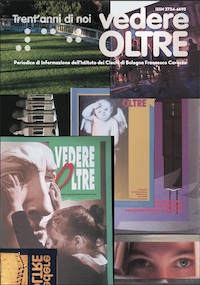Being defined as world heritage is a great satisfaction. And then when they put you on the UNESCO World Heritage List, the satisfaction is even greater. Italy, with 59 sites, is at the top of the list, and since December Bologna and Emilia Romagna have made a good impression, with 16 sites. After the city’s Porticoes, added to the list on July 28, 2021, Bologna’s Gypsum and some caves in the Emilia-Romagna Apennines (provinces of Reggio-Emilia, Rimini, and Ravenna) received this important recognition in late 2023. The description “caves and evaporitic karst of the northern Apennines” highlights the area’s value, which beyond its beauty and natural uniqueness, has been the subject of study and conservation projects for years. Our territory also includes the Croara Gypsum (Spipola Caves), the Zena and Idice Gypsum (Farneto Caves), the Bologna Gypsum and Abbadessa Badlands Park, and the Zola Predosa Gypsum (Gortani Caves).

All of these unique zones present the planet’s geomorphological evolution over thousands of years. The UNESCO website says this is the “world’s first and best-studied evaporitic karst complex”: a significant recognition by UNESCO’s international committee, meeting in Riyadh, and an additional stimulus to pay attention to shared heritage (the most valuable category), which forms the heart and souls of territories. Very often, when habit takes over, we lose sight of the magic and importance of familiar places. When walking every day under the porticoes or on trips in the hills outside the city, we might not stop to think about their history. The ancient Romans used the expression Genius Loci to describe the spirit, the distinctive trait, the character of an environment. Something to be respected, understood, and protected, to ensure that landscape and history, humans and nature, may preserve the special personality that makes them unique. We live in these spaces, a mix of architecture and environment, and it’s our task to live in harmony with their specific characteristics. We are surrounded by places – from porticoes to rocky formations created by the evaporation of seawater – that we know and have become used to, but we have to respect them and consider them extraordinary. So, for Bologna, a UNESCO record: in 2006, it was declared a City of Music and entered the UNESCO Creative Cities Network, in 2021, it became the City of Porticoes, which were added to the World Heritage List, and in 2023, the karst caves were also added to the list. We have to show that we deserve this international trust and, together, be grateful for the value of our surroundings.





.png)